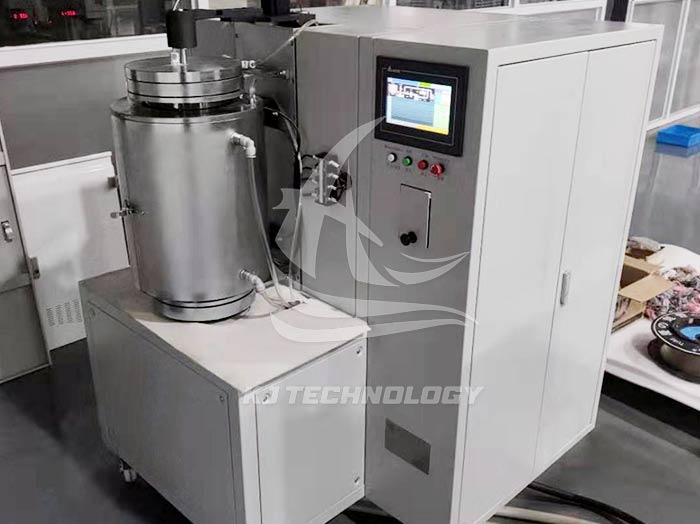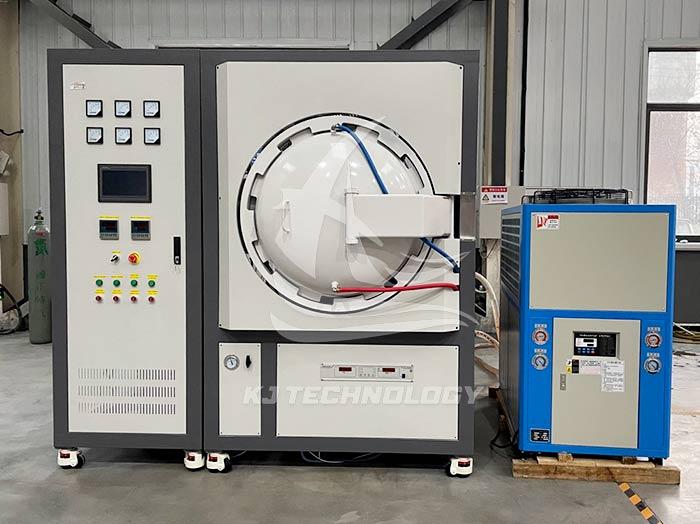The temperature of the heat treatment vacuum furnace cannot rise
 09-11-2025 Author: KJ technology
09-11-2025 Author: KJ technology
The inability to increase the temperature of the heat treatment vacuum furnace may be caused by various factors such as power supply and circuit, heating elements, vacuum system, control system, furnace structure and materials, operation and maintenance. The following are specific reasons and solutions:
1. Power and circuit issues
Insufficient power supply
Performance: Voltage or current below rated value, resulting in insufficient heating power.
Inspection method: Measure the input voltage and current with a multimeter and compare them with the parameters on the equipment nameplate.
Solution: Contact the power department to adjust the power supply, or install voltage regulators and compensating capacitors to improve the power factor.
Circuit connection failure
Performance: Loose, oxidized, or disconnected heating element wiring, resulting in the inability of current to pass through.
Inspection method: visually inspect whether the wiring terminals are tightened, and measure the resistance of the heating element with a megohmmeter (which should be consistent with the nominal value).
Solution: Re tighten the wiring terminals, remove the oxide layer, and replace the heating elements that are open or short circuited.
2. Heating element malfunction
Heating element damaged
Performance: Heating elements (such as molybdenum wire, graphite rod, silicon carbide rod) may break or age due to long-term use, overheating, or mechanical damage.
Inspection method: Observe the appearance of the heating element for any signs of breakage or erosion, and measure the resistance value (open circuit or abnormal increase in resistance indicates damage).
Solution: Replace the heating element with the same specifications, pay attention to avoiding mechanical damage during installation, and reserve appropriate expansion gaps.
Unreasonable layout of heating elements
Performance: Excessive spacing or uneven distribution of heating elements leads to heat concentration or rapid heat dissipation.
Inspection method: Check the installation drawing of the heating element to confirm whether the layout meets the design requirements.
Solution: Adjust the spacing or increase the number of heating elements to ensure even distribution of heat.
3. Impact of vacuum system
Insufficient vacuum degree
Performance: Residual gases (such as oxygen and water vapor) in the furnace cause heat to dissipate through convection and radiation, reducing heating efficiency.
Inspection method: Measure the pressure inside the furnace with a vacuum gauge to confirm whether it meets the process requirements (usually ≤ 10 ⁻ ³ Pa).
Solution: Check for air leaks in the vacuum pump, seals, and pipelines, clean or replace contaminated parts, and optimize pumping time.
Gas release effect
Performance: Furnace materials, workpieces, or fixtures release gases (such as adsorbed moisture and organic matter) at high temperatures, offsetting heating power.
Inspection method: Observe the change in vacuum degree during the heating process. If the vacuum degree decreases with increasing temperature, there may be deflation.
Solution: Pre bake the oven body and workpiece to remove adsorbed gases, and choose materials with low gas release rates (such as stainless steel and ceramics).
4. Control system malfunction
Temperature control instrument malfunction
Performance: The temperature controller displays a temperature that does not match the actual temperature or cannot output control signals.
Inspection method: Calibrate the temperature controller with a standard thermometer and check if the output signal (such as 4-20mA current) is normal.
Solution: Re calibrate the temperature controller and replace damaged sensors or control modules.
Improper PID parameter settings
Performance: Large temperature fluctuations or slow heating, unable to reach the set value stably.
Inspection method: Observe the temperature curve. If there is overshoot or hysteresis, the PID parameters need to be adjusted.
Solution: Adjust PID parameters (such as proportional band, integration time, differentiation time) according to the equipment manual, or enable self-tuning function.
5. Furnace structure and material issues
Damage to insulation layer
Performance: Thermal insulation materials (such as ceramic fibers, graphite felt) age, peel off, or become damp, causing heat loss.
Inspection method: visually inspect the appearance of the insulation layer and measure the furnace wall temperature (which should be at least 50 ℃ lower than the ambient temperature).
Solution: Replace the damaged insulation material to ensure a tight and seamless installation.
Defects in furnace structure design
Performance: The heat dissipation area of the furnace body is too large or the cooling water circuit design is unreasonable, resulting in the rapid removal of heat.
Inspection method: Analyze the thermal balance of the furnace body and calculate the proportion of heat dissipation loss.
Solution: Optimize the furnace structure (such as increasing the thickness of the insulation layer and reducing the heat dissipation area), adjust the cooling water flow rate or close some cooling circuits.
6. Improper operation and maintenance
Excessive workpiece loading capacity
Performance: Too many or densely arranged workpieces hinder heat transfer, resulting in slow heating.
Inspection method: Calculate the ratio of the total mass of the workpiece to the furnace cavity volume, and confirm whether it exceeds the design upper limit.
Solution: Reduce the number of workpieces or optimize their placement to ensure even heat transfer.
Insufficient maintenance and upkeep
Performance: Accumulation of ash, oxide scale, or residue inside the furnace affects heat transfer efficiency.
Inspection method: visually inspect the cleanliness inside the furnace and measure the distance between the heating element and the workpiece.
Solution: Regularly clean the debris inside the furnace and ensure that the distance between the heating element and the workpiece meets the requirements.
7. Case analysis and solutions
Case 1: A vacuum furnace stagnates after heating up to 600 ℃
Reason: Oxidation of the heating element terminal leads to an increase in contact resistance and a decrease in actual power.
Solution: Tighten the wiring terminals and remove the oxide layer to restore normal heating.
Case 2: A certain vacuum furnace heats up slowly and the vacuum degree fluctuates
Reason: The insulation layer of the furnace body is damp, and the vacuum pump oil pollution causes a decrease in pumping speed.
Solution: Dry the insulation layer and replace the vacuum pump oil, restoring both the heating rate and vacuum degree.








